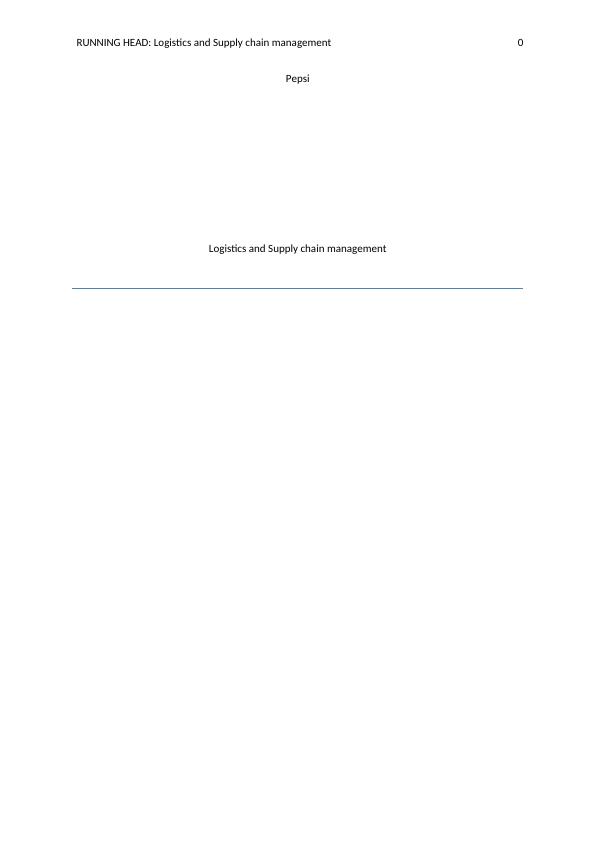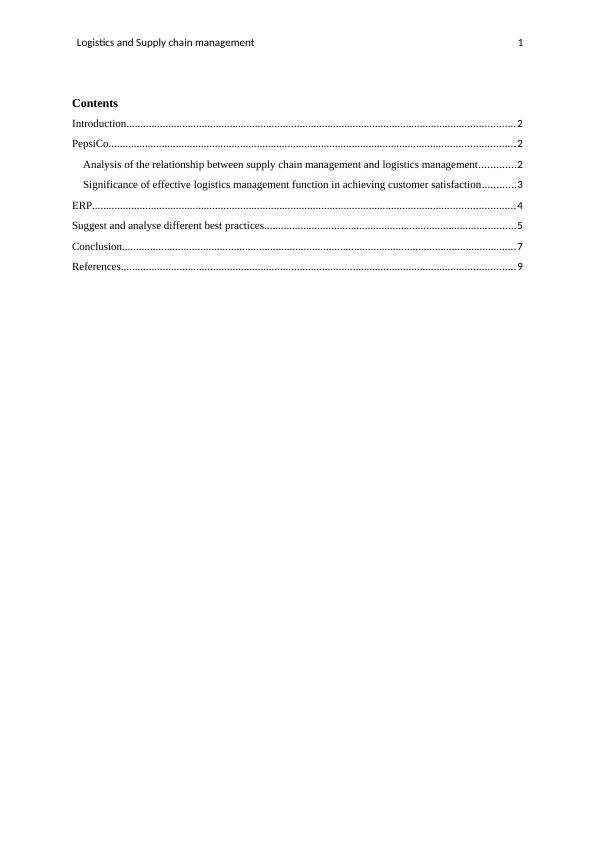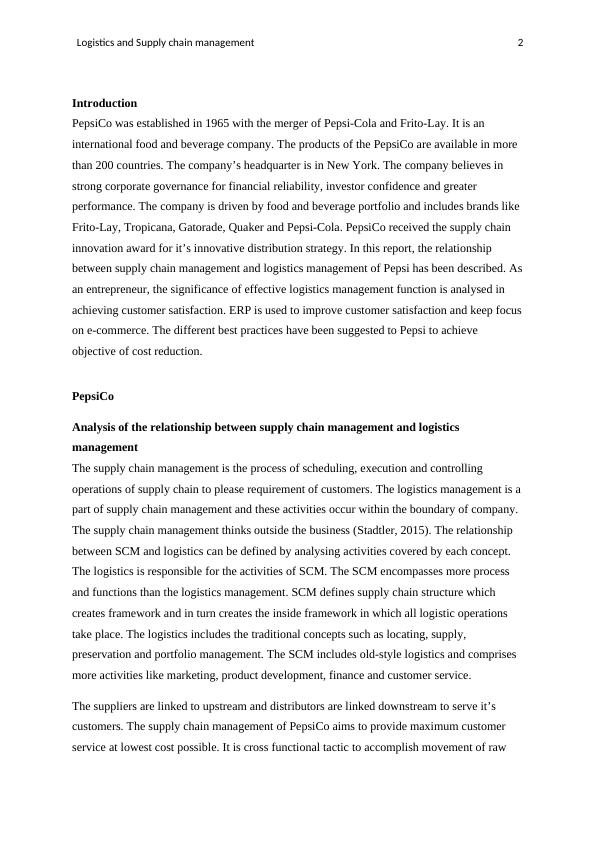Logistics and Supply Chain Management at PepsiCo
Discuss the purpose of the Supply Chain, explain the impact of Supply Chain decisions on the success of the Organisation, illustrate innovation in online business models and communications approaches, and explore and analyse Best Practice in Logistics and Supply Chain Management.
10 Pages3034 Words369 Views
Added on 2023-06-13
About This Document
This report analyzes the relationship between supply chain management and logistics management at PepsiCo. It also highlights the significance of effective logistics management in achieving customer satisfaction and suggests best practices for cost reduction.
Logistics and Supply Chain Management at PepsiCo
Discuss the purpose of the Supply Chain, explain the impact of Supply Chain decisions on the success of the Organisation, illustrate innovation in online business models and communications approaches, and explore and analyse Best Practice in Logistics and Supply Chain Management.
Added on 2023-06-13
ShareRelated Documents
End of preview
Want to access all the pages? Upload your documents or become a member.
PEM'16 BATCH SECTION 2 ELECTIVE GROUP - 6 PEM'16 BATCH SECTION 2 ELECTIVE GROUP - 6 PEPEPSICO
|16
|3382
|287
Study On PepsiCo - Supply Chain Strategies
|11
|3412
|2324
Strategic Management Assignment PepsiCo
|7
|1437
|547
DIPLOMA TRANSPORTATION AND DISTRIBUTION MANAGEMENT.
|13
|3341
|6
Management Theory and Prictices
|14
|4005
|42
Logistic and Supply Chain Management- Assignment
|10
|2726
|49



